 I have a sensory seeker, which means I have a kid who loves to move and groove. She loves to jump, swing, run, body check me, be squeezed-anything that provides input to her body, she craves. When she was a toddler, she would run around the house clutching an object in each hand and hum a very low guttural hum. It took me quite some time to realize that she did that because the vibration she could feel in her chest from that particular tone felt good to her.
I have a sensory seeker, which means I have a kid who loves to move and groove. She loves to jump, swing, run, body check me, be squeezed-anything that provides input to her body, she craves. When she was a toddler, she would run around the house clutching an object in each hand and hum a very low guttural hum. It took me quite some time to realize that she did that because the vibration she could feel in her chest from that particular tone felt good to her.
Prior to getting the autism diagnosis, we were told she had a sensory processing disorder. Knowing absolutely nothing about that, I turned to the internet to research how we could help. I came across the SPD Foundation which had a great search tool to find providers, as well as what to look for when selecting a provider. We hooked up with a wonderful OT who helped us understand the type of input that our daughter needed. She craved vestibular (the sense of movement centered in the inner ear) and proprioceptive (sensations from joints, muscles and connective tissues that lead to body awareness) input. While working with this OT, we rapidly understood that we were going to have to make quite a few changes in our home in order to meet her sensory needs. We had plenty of incentive, as we saw that with the right input, she looked absolutely blissful. In fact, she would even stop humming (or should it be called grumming? I mean it was a groan/hum combo after all).
Initially we were given recommendations to peruse websites dedicated to pediatric occupational and physical therapy needs. Have you ever seen those sites? I’m sure you have. They are amazing with very cool equipment that you have to rob a bank in order to buy. In less than twenty minutes the only thought in my head was “not going to happen.”
That didn’t exactly stop me. I mean, come on, I’m an autism mom- if we balked at every hurdle we’d never get anywhere in this recovery game. A little creativity sprinkled with some flexibility goes a long way. Because I’m guessing that I’m not the only one in to be in this situation, I thought I’d share some of the things we have done over time that might give you some ideas for your own homes.
The first step was really getting a grasp on what she truly craved and needed: interesting textures and funky surfaces to walk on, things to bounce on/with, pressure and, of course, movement-up, down, sideways and around.
Now, my initial thought was to construct some kind of sensory room. And we did do that. BUT we started this part when she was really young, so unless I wanted to live in that room and get absolutely nothing else accomplished in my day, I was going to have to find things that could meet sensory needs in multiple rooms in our house. Preferably things that did not require a whole bunch of moving from room to room (okay so maybe I’m a little lazy).
The main places to look for affordable things: Craig’s List, FreeCycle, Walmart, Target, Amazon and any sales at Toys R Us.
The very first thing I found cost $15 on Craig’s List. Check it out; it’s a Hedstrom Playset.
Fun, right? Slide, place to climb, little swing. Perfect sensory stimulation. Guess where we put it.
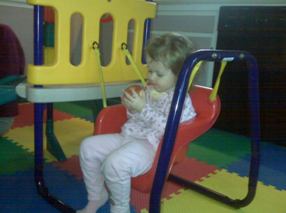
Yep, that would be my kitchen. We moved our table up against a wall, got some colorful interlocking mats.
The next thing I focused on was a ball pit. Every good sensory house, I mean room, needs a ball pit (or two), right? All of the ones I’d seen were quite pricey. In fact, even today when I’m talking to people they all balk at the price for a ball pit. It really doesn’t need to break the bank. We’ve done a couple over the course of the past few years.
When she was little this inflatable kiddie pool that I picked up on sale for $5 really did the trick. Add to it a $9.99 bag of balls and…well, check her out. She’s pretty comfy hanging out in it in our living room.
In fact, she liked it so much that she guarded it rather fiercely:
And we liked it so much that we got a smaller version for her bedroom.
Okay, so maybe the red one needed more balls in it. But she was pretty content with it nonetheless, and I was content to not have to drag the green one from room to room. Another win-win!
As she has grown, so has her ball pit. We wanted something bigger that would accommodate more balls and hopefully some friends. This larger ball pit was going to live in her sensory room that we put together in our basement. We chose a Jumpolene that we got on sale at Amazon. It was an immediate hit with her.
Thankfully it was also an immediate hit with friends (and a great incentive for play dates!)
Even the older friends.
See those two beauties up there? Those are Mama Mac’s kids. Even their dog got in and frolicked with them at one point. Happy kid, happy friends, happy parents who can have a conversation while their kids are all playing safely! Win-Win-Win!!
Want to be really creative? Ever wonder what to do on those off months of mHBOT?
Just kidding!
My next step was to address bouncing! Come on, who doesn’t love to bounce?
The obvious first choice was a mini trampoline.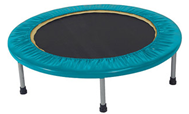 A fair number of people give these away on FreeCycle. We opted to put it down in the sensory room with an egg crate pad underneath. The egg crate pad was a donation from a family member. It made for an interesting surface to walk on and provided a little extra padding should she slip off.
A fair number of people give these away on FreeCycle. We opted to put it down in the sensory room with an egg crate pad underneath. The egg crate pad was a donation from a family member. It made for an interesting surface to walk on and provided a little extra padding should she slip off.
A Hippity Hop bouncer is another bouncing option. Again check FreeCycle first, but you can get them pretty inexpensively if you can’t find one there.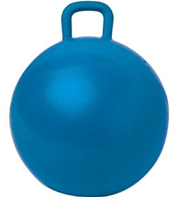
If balancing on the ball and bouncing is an issue, they now make a Rody (but don’t be fooled, they do tip over!)
If your child is small enough, believe it or not, a $1 punch- balloon from the local mall does the trick. They can also carry it from room to room themselves. Score! She’s four here:
One word of caution about the $1 punch-balloons. Avoid letting your child bounce on it in the store. There are little rocks on the floor that will pop it, causing some poor guy in the shoe aisle to hit the floor. Oops! Yes, that really happened. <blush>
In addition to all important bouncing…there is crashing, crawling, moving and springing on a funky surface. It turns out that it’s super easy and cheap to make your own “crash pad” “moon walk” or “foam bed” simply by filling a duvet cover with scraps of foam that you can get from almost any furniture or upholstering store for free. Just call and ask them if you can pick up a bag of their scrap foam for your child’s occupational therapy at home.
You can use scraps of any size from large to small. The only thing that matters is your preference of surfaces. The large blocks make great crash pads, while the smaller scraps make better “moon walks.”
If you can’t find an upholstering store to donate to you, you can advertise on your local FreeCycle or order it from a place like foambymail.com. I highly recommend the free route for obvious reasons!
I also learned to not overlook things that were already in the house. If you have removable couch cushions, they make a great unpredicatable surface to walk on…or a nice place to sit and bounce with a snack.
Speaking of interesting surfaces? See that gray mat under her feet? It’s actually from a pet store. Its “real” purpose is to clean the cat litter off of little paws rather than letting it get all over your house. It feels much like soft tickly grass and it was a texture that my daughter loved to stand and sit on. It was far more affordable than some of the options I saw at some expensive therapy stores.
Another interesting surface with an auditory kick is bubble wrap. Any friends who come over will love to get in on the game of jumping, dancing and hopping in piles of bubble wrap!
Ask some of your local moving companies to donate some to you. Call them and explain to them that you have a child with SPD or Autism and tell them what you need it for. Many companies will gladly donate some to you! You can also ask family members and friends to save theirs for you. If you want to buy it, Staples and any packaging store will always have some in stock.
If you want to purchase funky surfaces, you can always buy sensory stones from Amazon or look for them on Craig’s List. There are many different types. Here are a couple of examples:
Sometimes it is easy to get caught up in what you can put in the room that something simple like gluten free finger paint might be overlooked, but it provides a great deal of sensory input and fun.
I like purchasing from Discount School Supply because their kit comes with sponges and sensory balls, and they sell those amazing large rolls of paper, too! We tear off a big piece and tape it to the floor. It truly provides lots of fun!
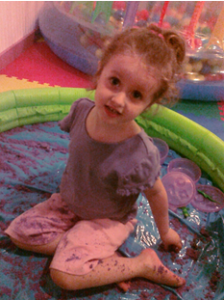 As your child matures you will find yourself replacing various things in your house and sensory room, so don’t forget to recycle when you can. Our green ball pit’s second ring popped, but it made a great moon sand holder later on. You can see her in the remnants of moon sand in it here. You can find Moon Sand in bulk for much less than you’ll ever find it in a store. A 5 lb bag is around $15…or you can simply go to your regular Lowe’s or Home Depot and buy some sandbox sand for even less money.
As your child matures you will find yourself replacing various things in your house and sensory room, so don’t forget to recycle when you can. Our green ball pit’s second ring popped, but it made a great moon sand holder later on. You can see her in the remnants of moon sand in it here. You can find Moon Sand in bulk for much less than you’ll ever find it in a store. A 5 lb bag is around $15…or you can simply go to your regular Lowe’s or Home Depot and buy some sandbox sand for even less money.
Speaking of sand. I quickly realized that these fun sand/water tables that provide so much joy in the summer time can easily be cleaned and moved inside in the wintertime.
While you are planning your own sensory filled environment for your child, don’t overlook the very simple and free, yet fun-packed activities like swinging them under the arms, riding down the hall in a laundry basket, jumping on a bed, two people grabbing four corners of a blanket and swinging the child, and playing catch with a giant therapy ball (the impact is SO much fun! You are guaranteed to get squeals of absolute delight!)
Over the past few years, our daughter’s sensory room has grown and changed right along with her as you can see.
The bucket swing was replaced by a band swing, The miniature ball pit grew to a larger one, the PlayHut and tunnels come and go (thankfully they are easily stored) The Sit-n-Spin was replaced with musical instruments. The interestingly textured egg crate that was under the trampoline has disintegrated…but many things remain
The trampoline, ball pit, bean bag and swing are constants. The opposite side of the room now holds a slide, bicycle, wagon and shelving to store puzzles, paint and craft supplies.
One thing we have noticed for sure. The more relaxed, creative and flexible we are, the more relaxed, creative and flexible she is.
Now… How do you meet your child’s sensory needs? What are some of your favorite things to do?
Happy moving and grooving!!
~Money
Resources:
Sensory Processing Disorder Site
Sensory Smarts- ideas for a sensory diet
For more blogs by Money Click Here







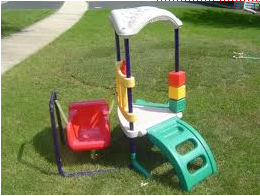
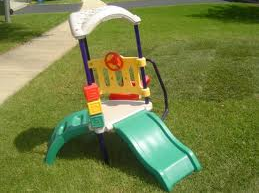
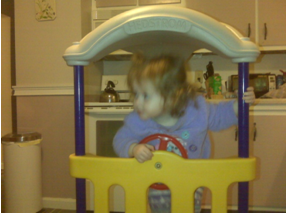
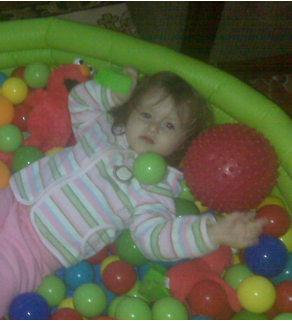
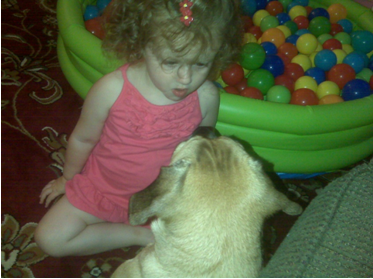
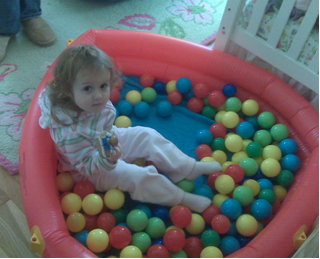
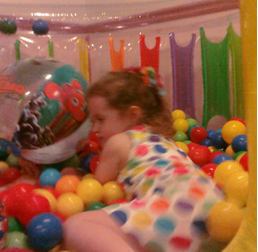
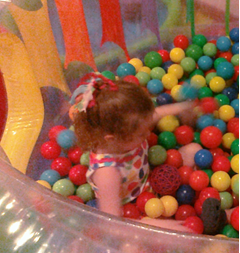
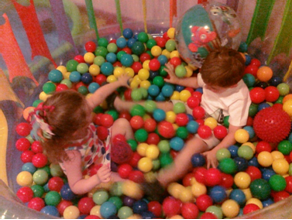
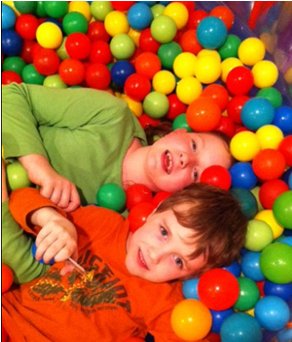
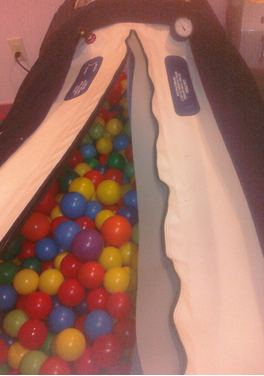


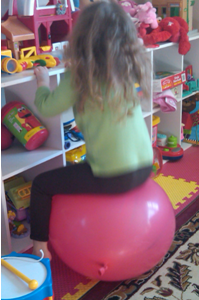




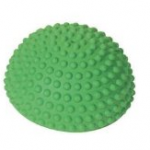
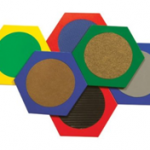
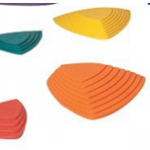

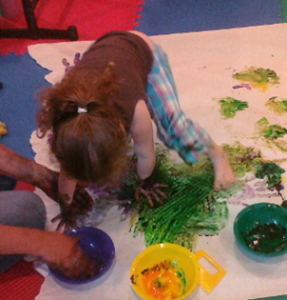


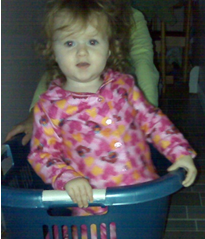


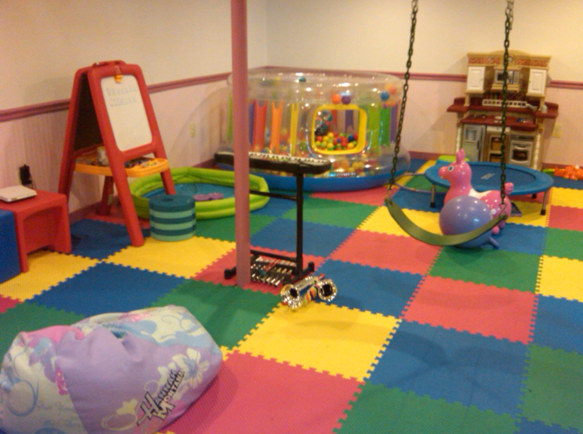
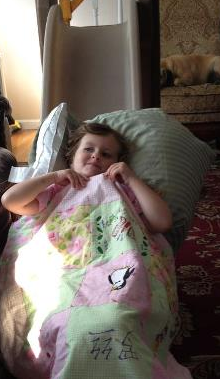










Thanks SO much for these ideas!! We’re new to the SPD journey - our 4 year old was just diagnosed this fall. He began OT, but I’m just learning what he needs, much less how to bring that into our home :/ You said it, though - he’s much happier when I help him. Just ordered a trampoline, which I knew we wanted, and egg crate foam - thanks for that idea!! I plan to keep your post close - more ideas for the future I know. Especially with winter upon us, stuck in the house 🙂
Hello! Great ideas thank you!
Question: about how many pounds of foam scrapes would you need to fill the duvet for a crash pad. Was it queen size?
Thank you so much!
Jillian
https://amzn.com/B01KN20A04
Soothing colored water beads, they work great!
hello im trying to buy a communicator device for my 5 year old autistic boy. He has a sensory processing disorder
would the total talk communicator be the best bet for him for me to buy
if anyone knows which device to buy
please let me know
Rarely can you ever tell that a child is autistic before they reach the age of three. All the symptoms you might have been noticing in them prior to that, you have probably put down as something else, something that babies usually have. But by the time they begin to reach that age where you are expecting a lot more communication from the child, you will notice and know that something is amiss.
Sometimes you can tell that a child is autistic all the way from their first or second year as infants, and sometimes you’d never even guess until they were a few good years older. And then there might be times when the symptoms subside somewhat during the course of their lives, but at other times, the person could remain like that all the way to old age. So when you find that a relative of yours is autistic, you had better begin to prepare for the long haul.
http://www.autismsensorytoys.com/best-sensory-toys-autistic-children/
Has it ever occurred to you that it may be that you “can’t tell” that a child is autistic because the child is NOT autistic until then? To assume that so many thousands of parents just “missed” the signs, especially when many of them were not first-time parents, is arrogant in the extreme. It is true that Asperger’s and “high-functioning” autism is not detected until later, but that is because their condition is far more subtle than those who are severely affected. Many of those claiming their children regressed have videos showing normal development until a round of vaccines triggered severe autism.
Researchers have examined those videos you talk about, and found that yes, the kids rehressed, but they were not normal before the regression.
What “researchers”? And “not normal,” if indeed that is the case (and it certainly is not always), does not mean “autistic.” My children are not “normal.” Both of them have had neurological issues that make life more difficult for them, but neither of them has autism. I strongly suspect that with more vaccination both would have been.
Thank you!!! You are an amazing mother, and so inspiring!!!!! My son Jett is 4 1/2 newly diagnosed ADHD and SPD. I am a single mother of 3 and helping raise my 1 yr old grandson. I work full time but we get NO assistance of any type, so we struggle A LOT!! I am still trying to figure out what sets Jett off and what I can do to help him. I am going to try your suggestions, I will have to start small in his room. but I am willing to do anything to help my baby boy!! thank you
Have you ever tried making bread dough. My sensory kids love helping. If you want to avoid the majority of the mess, you can make up to a 2 lb dough in a gallon size snap bag. My kids usually do the majority of the kneading (I usually finish it off). This works great for many things including patience (double rising), shaping interesting shapes, and eating what you created yourself. Sometimes we turn it into pizza, other times regular sandwich bread.
Hi. im excited to start working on my son’s own sensory room. wish me luck. BTW, how big is your sensory room? it looks so spacious.
great blog.thanks to shared this information.Preschool in India
Great post n ideas. ..I am mom of 2 years boy…having spectrum disorder.@Dianna Joseph. ..can u please help me how you helped ur kids come out of spectrum.
Pingback: Meeting Sensory Needs On A Budget | The Sensory Spectrum
I just think you are amazing!! I loved all your ideas, there’s a few i got my granddaughters 4 and has autism non verbal. Loves windchimes, But i am gonna make her a room, Best idea ever. We got her a swingset, trampoline, Kitchen . But i’m gonna try the art, and she’s got a sand box. All these things are great at stimulating her. Thanks for all the new ideas. We are not rich so those ideas will help. I go to flea markets thrift stores and find different things. And flashlights she loves them too.. Thank you your awesome…. My minds going 50 miles a minute ready to make these things.. Thanks..
Some fantastic tips in here. Thank you!
My son is most calm outside. He enjoys chimes and water. When we decided it was time to move, we found a home with a pool and slide. He also has been given a collection of chimes which he hangs around the yard. Some evenings the family swims before bed. This seems to calm his body.
We have a rice pit and a bean pit! He can cover his entire body!
We have a similar sensory room in our basement. We also have a tunnel, which you can get pretty inexpensively and often find at second-hand stores. We recently added a rocking horse, too, which you could probably find secondhand. Plus a big slide and a Rody. We used to have a ball pit, too.
All of this was very interesting. I am grandmother and guardian of my 9 year old grandson and I am making him a crash pad right now. I had some cushions that came out of a travel trailer we use to have and cutting that up makes perfect pieces for the crash pad. It is very good foam rubber. Just in case anyone might need another way of getting material. They are very expensive if you are on a budget. I bought a cover for $44.00 on amazon and the filling is costing me nothing. Very happy and I am sure he will be also.
Pingback: Meeting Sensory Needs On A Budget - The Thinking Moms’ Revolution | The Highly Sensitive Family
Pingback: Budget Grappling Ball | Grappling, BJJ & Jiu Jitsu Training Tips, News and More
You have done an excellent job on creating this room. You are a mother warrior too!
You really should write a book and publish it (when you have time 🙂 )
My house used to look like that too!
I am a SI certified OT and mommy to 2 boys that I recovered from autism!
I will be referring other moms to your site.
“Every good sensory house, I mean room, needs a ball pit (or two), right?” LOL!!!! I am not alone!! I feel like my whole house is a sensory room some days.
Pingback: Sensory Processing Disorders (SPD) | The Garden Of Resistance
Pingback: What in the World is Going On October 2012 Edition // Autism Awareness Centre
I have created a sensory room in the basement of the group home where I work. The room was designed for an 18 year old male with autism. I used one of those hammock swings, a large inflaitable pool and balls (you can order bulk through Walmart.com), un stuffed various stuffed animals partially and restuffed with rice and various dried beans for weight and texture, and found many items at Dollar Tree, WalmartN amazon for way cheaper than what it costs in those therapy magazines.
You r super great thank you sooooooo much. U touched some of the major areas Im faced with . ur awesome well wishes for u ur babygirl family & home
This is by far the best blog I have read on creating a sensory room! Thank you.
Thank you. You gave me some ideas I hadn’t thought of. We are short on cash and in great need of sensory in this house! We do a lot of rolling on the floor, jumping on trampoline, crashing into beanbag, and combinations of them all. We have sensory bins full of stuff from the dollar store or cheap isle in Walmart or Target. However, I had been thinking about a ball pit, and you helped! Thanks!
I run a small play school in India and I am looking to calm down a few of our kids. Glad to have stumbled across this blog. Just wanted to ask if the Jumpolene that you have shown will take the wear and tear of a play school ? Thanks for all your inputs here.
Wonderful list! I find that sometimes just covering the kids laps with a heavy blanket while reading them a story calms their body and helps them relax. Our sensory play is mostly outdoors with natural materials for sensory and auditory stimulation and either toys or playground equipment or just plain playing to help with the bouncing, spinning, and heavy work needs.
We also had a large rubbermaid tub filled with play grade beans the kidlet could fit in when he was small. The beans were donated to us via Freecycle, and we passed them on via Freecycle when he wouldn’t fit anymore. You could do the same thing with a big tub of rice, also, and have little sand toys and empty plastic containers to play with. And we had a hammock swing. Sadly, the kidlet now weighs almost as much as I do. He’s ten. We signed him up for Tae Kwon Do last night. He’s awkward in his movements, but we are hoping this training will help with that and with his plummeting self esteem. If you read “The Out-of-Sync Child” and the “Out-of-Sync Child Has Fun,” there are more great ideas for sensory equipment on a budget!
Pingback: 1 year, 24 parents, 300+ blogs: My Top Picks | The Thinking Moms' Revolution
How did you come up with the balloon idea? I always assumed they would pop.
Another idea for a ball pit… If your child isn’t using a pack-n-play, just fill it with balls. We did this for a few months until my kids didn’t want the pack-n-play, then we moved to an indoor trampoline filled with balls… Talk about multi-sensory input!
Hello,
Loved this post. My older child has always had sensory issues-this was exacerbated by having a sibling with a significant disability. We didn’t know that early intervention could help her until she was already school-aged, and by then we had done so much on our own using the Out of Sync child and other similar books. But I wanted to share that there are some great, DIY ideas being shared over on Pinterest. I have been curating a few boards focusing on young children with disabilities, initially I focused on early intervention, but realized that I was finding so many pins that I had to re-catalog and create separate boards to address fine motor, gross motor, speech/feeding, adaptive, vision impairments and just plain old play! Check out my pins on Pinterest http://pinterest.com/caseywaid/
Great job. May I also suggest the Little Tykes Step Up Coaster. Ad as our daughter got older, she loved the Extreme Coaster by Little Tykes.
I loved reading this. It’s like going back in time 15 years. 🙂 I wonder how much sensory needs change over time?
Awesome. And like going back in time to my house. My son had a “Big-ens” ball that we had for like 10 years. That thing was like gold to my son. And yes it was yellow 🙂
http://www.amazon.com/Unknown-40-Bigens-Play-Ball/dp/B00004SB9V/ref=cm_cr_pr_product_top
My now grown son still uses the mini-trampoline a lot.
All great suggestions!! We’ve done many of these in our home as well.Lived in a house w a basement for my son’s first 4yrs, so it def became the OT room by default-trampoline,ball pit,huts, tunnels, kiddie slide.What most ppl dnt get is that since all those sound like reg fun kid stuff, how is it for therapy¬ just kidplay. And the reason why is bc our kids r NOT drawn to those toys/activities. Bc their senses r “out of whack” they find comfort in unusual/atypical ways. A good OT can pinpoint the specific issues & help us parents figure out the best way to have our kids work toward choosing/participating in/using the typical kiddie eqipment/activities in a way that meets their needs.During ‘that time’ he constantly did 2 things at home for sensory input: run up&down the hallway from his bdrm door to the edge of the living rm couch & crash into the arm resting his belly on it, sometimes pressing hard,really hard. (thinkingmoms know that=gut issues) And if we were downstairs (rem,the colorful inticing OT room?) he wld constantly climb up on seat of the couch,stand,lay on top&climb over back of couch sliding down the back,dropping to the floor.Then go around&do it again.And again. My son was a huge sensory seeker. Yes,WAS. After 4yrs on this journey,@7 now he is totally recovered frm SPD. No more sensory issues. Does he still love vestibular& proprioceptive input? Ofcourse! But the need for it does not interfere w daily living,learning & he is totally in control of his body. He can get too wild at times-for ex)when playing sword fighting w his bro-he may walk/run/jump on the couch & next thing u know they r battling on the couch & we all know someone will need an ice pack in 5min if I let it continue.The diff is this:He knows exactly what he needs to feel “right” & seeks out completely appropriate ways to get input all on his own. He has finally figured it out aftr many yrs of hard work&I couldnt b more proud! Somersaulting is his new thing (self-taught) so i signed him up for a gymnastics class this summer&it was amazing how regulated/calm/ focused/alert he was on Wed evenings. Water activites (sprinklers&pool)playdoh,squeezeeballs &bendaroos(wiki stix) all provide instant relaxation-its amazing.lol And classical music. Put it on when he’s tired/cranky…BOOM, in 2 min he’s out!lol
I wanted to suggest 2 things to those who feel bc they dont hv a basement/large space these OT activites at home wld be difficult.
1.) From age 2.5-age 4 my son followed a sensory diet prescribed by the OT & I truly believe it did wonders4him.(in addition to the GFCF diet as well haha) These4things were extremely effective & did not require large space/equipment:
A weighted vest (on/off every30min) ($$covered in therapy)
Brushing technique (3xday/as needed)
Joint compressions (following brushing)
Massage w lotion (after bath/b4 bed)
*the vest was worn mostly in schl&aftr 4yo we transitioned to ankle weights only@home.*
2.)The other thing that did wonders for my son is goin to the park/playground AS MUCH AS POSSIBLE. He thrived on that large equipment & spent his time there becoming an excellent climber focused on mastering every slide/swing/bar/etc He had no fear & tightrope walker precision. He couldnt talk but at 3 he was climbing w the 6yo kids&it really fed his ego.Gave him a sense of pride,accomplishment&became his motivation for speaking: “go” his first word as he pointed at our park. It was a few blocks away but IMO dont walk-driving is crucial. Walking does NOTHING for my kid’s sensory input-only tires him out,w no energy2play when arriving-so drive.
As long as the weather was good, we went prob every single day-it kinda became a daily 60min therapy session. It cant fit in ur house anyway, its free & fresh air daily is essential for productivity!
Have I helped? Hope so:)
Pingback: Sensory Blog Post:Thinking Moms | Lyme Disease Mommy
This an amazing article. You’ve given me some great ideas to use in my classroom this year. I have a sensory room that the OT department at my school built for me out of PVC pipes and white walls. We’ll pad the inside of it for the school year with mats but these ideas are awesome to help me figure out new things for them to use in the sensory room. Keep up the great job.
The book that got us started was, The Out of Sync Child and The Out of Sync Child has fun. It’s a great place to start. We all end up making sensory work out of everything.
This is awesome! We just got a diagnosis a few months ago, so we’re still trying to find our groove. I can’t wait to set some of these things up for my son!
This is wonderful! Is it OK if I reference this? I am a pediatric occupational therapist with a huge passion for sensory issues, especially those in foster and adoptive children -“kids from hard places”. I’m also fascinated by the amazing kids diagnosed with autism but don’t have much experience with them… yet. 🙂 I would like to share this as a resource when I train foster and adoptive parents. I can tell you are a fabulous mom! I will probably have questions for you as I look back over this. Keep at it!
Thank you so much! I’m so glad to hear that you will be working in the field. I have no doubt you’ll love it! Feel free to share away 🙂 Best wishes, Money
One thing I learned in an OT internship 15 years ago for sensory processors is somersaulting when safe. Yeah, thank god iPhones weren’t around, but rolling down hills, or even in yards for that same sort of vestibular sensation. Right now you can also pick up swimming noodles dirt cheap as summer ends which provide a textured low balance beam.
Great suggestions! Thank you! 🙂
I have a 50 lb boy who has gone through more inflatable kiddie pools (ball pits) then I would admit to haha. My solution was one of the large 60 inch hard plastic pools. My son LOVES it and it’s holding up perfectly!
What a great blog post! So many wonderful and economical ideas, thanks for sharing! My son is 7 now, and we use a lot of tactile things for learning at home. For example, we write his spelling words each week in a tray of salt or sand. I also put some non-toxic paint in a large ziploc bag (ok, I double bagged it) and he writes his spelling words with his finger on the bag. When he was younger, we used sand, glue and construction paper to make cards with all of the letters on them. Once they dried, he would trace his letters over and over again on the cards.
This is fantastic! I love the spelling words in sand. I have a feeling my daughter will love that!
Exercise balls are a fabulous tool. They work anywhere including the trampoline (for extra bouncy fun) and the pool. I recently found a peanut shaped one which I scooped up for $14.00 @ Walmart. We bought an indoor swing (uses a pressure bar that you place in a door jam or in a hallway) and it has been the best OT investment ever. It was about $250 which includes a sling swing, a net swing and a trapeze bar - but my son has used it for about 5 years now so I can’t argue about the price. It’s one of those things that your child can grow into and continue to use - and it’s hard to break!
My son loves to feel his body slam against something - like water or a trampoline or the bed. If you can’t afford a trampoline, getting some large thick mats to lay on the floor and/or walls will give a kid the opportunity to do some slamming without causing injury. Schools will sometimes sell off their old wrestling mats. Even getting an old mattress off of craigslist would work for a ‘slamming corner’.
These are such wonderful ideas! I need to look for a peanut shaped ball, that would be perfect 🙂 I just stuck our large exercise ball inside a camping tent that is currently pitched in our living room. There are so many fun things you can do with those!
Thank you so much for sharing these ideas!
Great ideas. What do you do when you don’t have a room to put all the sensory or OT stuff in one room? Also I have a hard time finding a ball pit that will fit a 12 yr old who is twice the size of your daughter . Do you know what I can use for a ball pit? I think this is easier if you have a basement.
Although I think it is easier if you have a basement, we didn’t start out there. We ‘collected’ things over time and in the beginning we just started with something in each room. Although my daughter is 5 now, Mama Mac’s daughter is a Tween who is also twice the size of my peanut and she fit nicely along with her brother (and dog) in the Jumpolene that we use as a ball pit. We don’t inflate the floor of it and just fill it with balls instead. Come to think of it, two of the people who worked with her, who were adults, got in it with her. You can see one of them in the pictures of them painting. The Jumpolene is the clear round thing in the corner in the second to last picture. I wonder if you could do a ball pit like that in your child’s bedroom? Here is an example of someone making a ball pit on their balcony http://kevinjameshunt.com/ball-pit-balcony/how-to-build-a-ball-pit-on-your-balcony/ I also like the way that this person decided to pad their smaller one http://themetzgars.blogspot.com/2011/04/how-to-build-ball-pit.html
Great article! Going to post it on Educational journeysLLC Facebook.